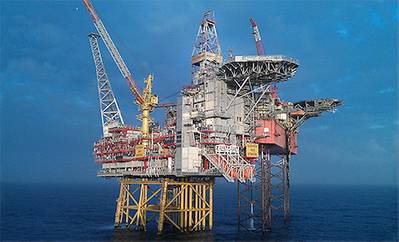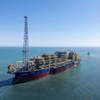Statoil Completes Gudrun Leak Investigation
A condensate leak occurred on the Gudrun platform in the North Sea on February 18, 2015. The incident has been investigated by Statoil’s corporate investigation team which classifies it to be of the highest degree of seriousness.
On the morning of February 18, noise and vibrations were reported on Gudrun, and shortly afterwards hydrocarbons were confirmed in the process module.
There was a 2 mm wide crack extending approximately 90 percent across the circumference of a two-inch pipeline. Condensate had leaked from the pipeline and resulted in gas distribution. The actual leak rate is calculated to be around 8 kilogram/second.
The volume of condensate from the leak is estimated to 4 cubic meters.
No one was injured as no personnel were present in the area. The investigation concludes that the outcome could have been fatal if anybody had been exposed to the leak. A gas leak of this size represents a major incident potential if ignited.
“The condensate leak on Gudrun was serious with major incident potential,” said Øystein Arvid Håland, senior vice president of safety and sustainability of Development and Production Norway.
“Statoil is working systematically on gas leak prevention, and the learnings from this incident shall be translated into specific actions. We must ensure that these efforts help prevent future incidents.”
Based on material technical investigations the crack was the result of fatigue and overload. An under-dimensioned level valve led to vibrations in the valve itself and in the surrounding piping system during regular plant operation.
The vibrations resulted in loss of level valve control. The loss of valve control caused repeating powerful vibrations and strokes in the piping system which exceeded the design capacity.
No material defects, metallurgical irregularities or welding defects have been proven. The investigation team believes that pure chance prevented a full pipeline break.
The gas detectors recorded the leak, ignition sources were disconnected and the deluge system started automatically, as did the pressure relief system and the emergency shutdown system.
“I am glad that no one was injured,” said Bente Aleksandersen, senior vice president of the operations south cluster of Development and Production Norway.
“The investigation gives us valuable information to learn from and it is our responsibility to use this information both in Statoil and towards the Petroleum Safety Authority Norway (PSAN) and other players in the industry to prevent a recurrence of this type of incident. When the leak occurred, the emergency response system functioned as intended.”









